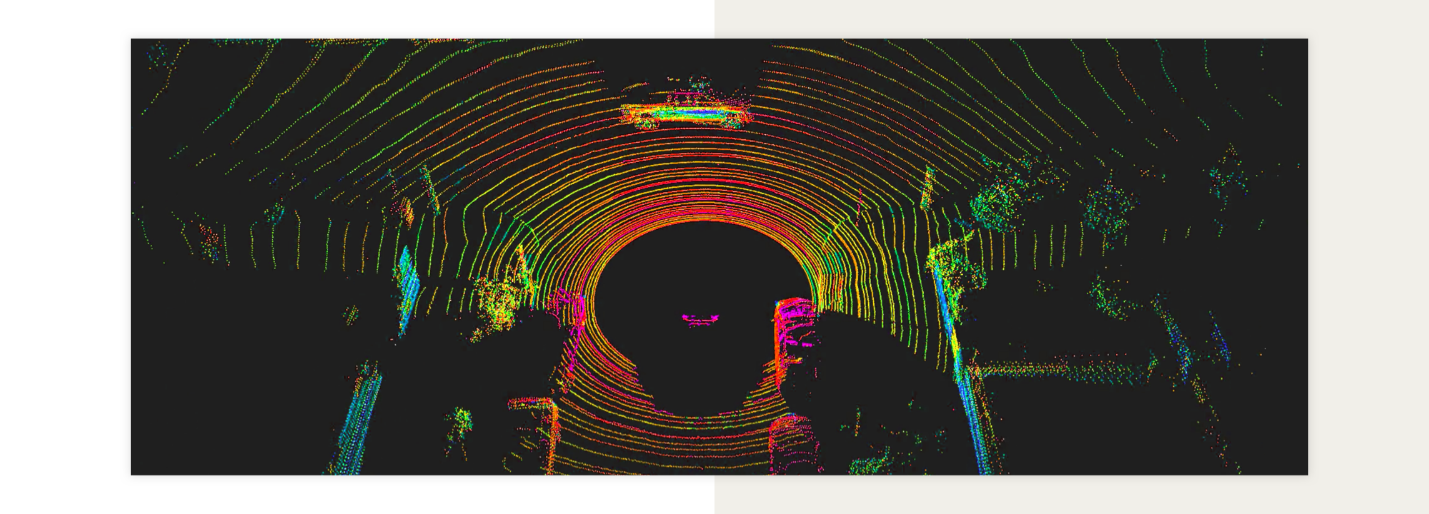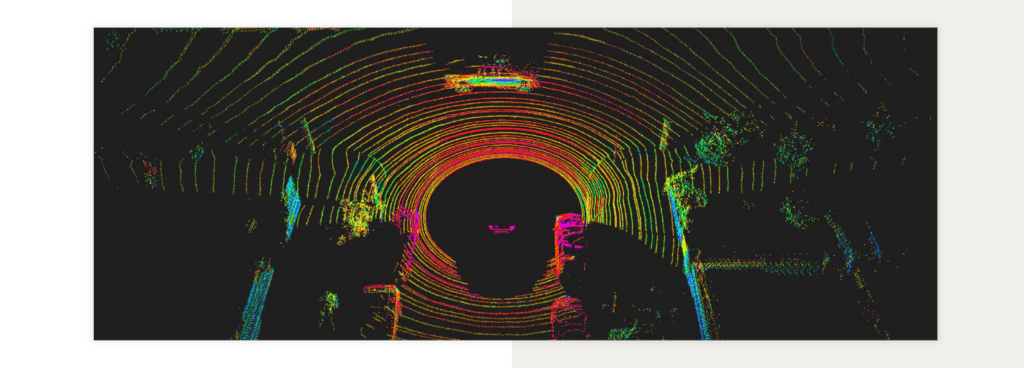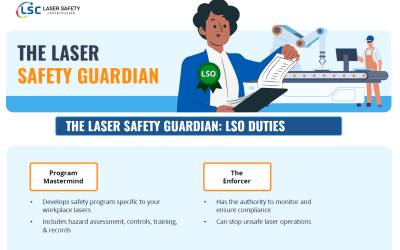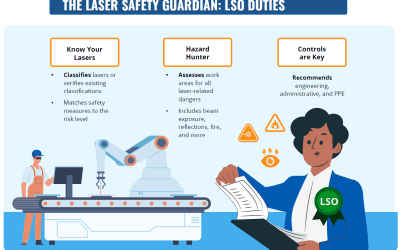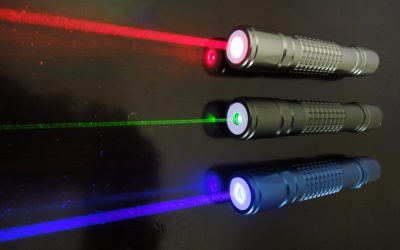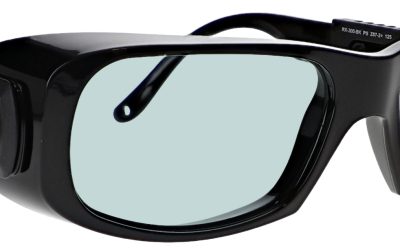Is LiDAR Winning the Autonomous Car Race?
Camera technology or laser technology?
The current debate surrounding self-driving cars centers on which technology will win the race to create safe, reliable autonomous transportation. Several states have enacted laws for autonomous cars (Nevada, California, Florida, Michigan, Hawaii, Washington, Texas and Tennessee and automakers are working furiously to get ready for expanding acceptance of driverless cars.
Take a look at the detailed visualization of how LiDAR maps the world around a vehicle. [1] This view is from the Oxford Technical Solutions GPS solution prepared for the DARPA Urban Challenge Competition.
But are the streets of America ready for driverless cars? Yes, no and but “what kind?” The National Highway Traffic Safety Administration (NHTSA) [7] adopted the Society of Automotive Engineers’ J3016 six levels [5] describing automated driving systems. It is vitally important to distinguish the levels of human interaction (if any) versus the levels of vehicle managed or initiated operations.
Vehicle Autonomy Levels
These levels allow the various implementations of autonomous vehicle control systems to be compared and measured against each other. They are:
- Level 0: The human driver is in complete control.
- Level 1: Most operations are driver-controlled, but some specific functions (steering, accelerating, parking) can be done automatically by the car.
- Level 2: The driver allows the car the take over some portion of the car’s operation, such as steering and speeding/accelerating, but the driver must always be ready to take back control.
- Level 3: Drivers are necessary in Level 3, but can allow the car to take over under certain driving and traffic conditions. The driver does not need to monitor the car’s activity and with the same level of scrutiny.
- Level 4: This is the fully autonomous level where the car performs all safety-critical driving functions and monitors roadway conditions the entire trip. Any limit to the car’s ability to perform these functions is limited by its operational design.
- Level 5: The fully autonomous car acts like a human in every driving scenario.
Also check out the link below where Synopsys explains the Vehicle Autonomy Levels in more details. [6]
Cameras versus LiDAR
Tesla CEO Elon Musk revolutionized the electric car market with the gorgeously sleek Tesla 3 sedan. With an all-electric range of 220 – 310 miles, the Tesla used an array of cameras for driving and parking assistance. But revolutionizing the electric car market wasn’t enough for Musk, who has grand ambitions to make reusable space rockets that can take humans to Mars. Newer models of Tesla cars will have eight cameras providing 360-degree visibility around the vehicle with a range of up to 250 meters. These cameras, various sensors and radar are Tesla’s game plan for the fully autonomous car, meaning they won’t require human input to operate. [2]
But cameras aren’t the only self-driving technology game in town. Google subsidiary Waymo is focusing its self-driving car efforts on LiDAR – a laser system that operates on the same principal as radar. [3]
LiDAR was first used to measure clouds but it really came into focus when a LiDAR system was used in 1971 by the Apollo 15 crew to map the surface of the moon.
LiDAR scanners can provide a 360-degree view of what’s happening around the car and even around corners, giving it a distinct technological advantage. Companies transforming the automotive LiDAR market are Germany’s Continental AG, LeddarTech, Quanergy Systems Inc. and Velodyne LiDAR.
The focus on safety has intensified since a tragic fatal crash involving a self-driving Uber car in Tempe, Arizona recently. [4] Software that makes the car run smoothly can also cause a false reading and allow the system to ignore certain objects. Unfortunately, a woman died because the software misidentified her in the dark. Future autonomous car technology will focus on the balance between the primary need for human safety and the practical need for rider comfort.
As autonomous vehicles, industrial equipment/machinery and 3D mapping and surveillance flourish, the need for sophisticated LiDAR technology expands.
Who we are at Laser Safety Certification
At Laser Safety Certification, we have laser safety courses and Laser Safety Officer (LSO) certification programs to make sure your team are correctly using lasers and your customers are protected. We can help with your laser safety training needs if you are using lasers in manufacturing or production applications, or if you are using them in medical or healthcare fields and have concerns about your patient safety.
We have laser safety certification courses for Industrial, Cosmetic or Medical/Healthcare and Veterinary laser users. We also have Laser Safety Officer certification courses to help organize your company laser safety program. We base this training on the current OSHA Technical Manual sections that apply to laser hazards and laser safety. We can also provide laser safety kits and training bundles to help your LSO administer your laser safety program to protect your team as well as your customers.
Click here to enroll your company to get started today. Or check out our FAQ section for common answers about our courses, certification options and kit offerings, and get started by enrolling your company today. You can always email us at info@lasersafetycertification.com if you want more information about how we can help your business use lasers safely while protecting your employees and your customers.
Sources
[1] Visualization of LiDAR from DARPA Urban Challenge Competition: https://www.youtube.com/watch?v=nXlqv_k4P8Q
[2] Newslink story why Telsa won’t use LiDAR: https://www.youtube.com/watch?v=W-ubNvS0RGU
[3] Google’s Waymo solution from Investopedia: https://www.investopedia.com/articles/investing/052014/how-googles-selfdriving-car-will-change-everything.asp
[4] AZCentral update on Uber autonomous car crash: https://www.azcentral.com/story/news/local/tempe/2019/03/17/one-year-after-self-driving-uber-rafaela-vasquez-behind-wheel-crash-death-elaine-herzberg-tempe/1296676002/
[5] SAE J3016: https://www.sae.org/blog/sae-j3016-update
[6] Synopsys explanation of the Vehicle Autonomy Levels: https://www.synopsys.com/automotive/autonomous-driving-levels.html
[7] NHTSA Automated Vehicles for Safety site: https://www.nhtsa.gov/technology-innovation/automated-vehicles-safety
